Snakes have slithered their way into the hearts of many exotic pet enthusiasts, offering a unique combination of fascinating behaviors, striking appearances, and relatively low-maintenance care requirements. While movies and media often portray these reptiles as threatening, many snake species are actually docile, gentle, and can form meaningful connections with their human caretakers. For beginners and experienced herpetoculturists alike, choosing the right snake species is crucial for a positive pet ownership experience. This article explores fourteen friendly snake species that make excellent pets, detailing their temperaments, care requirements, and what makes each one special in the world of reptile companionship.
Corn Snake (Pantherophis guttatus)
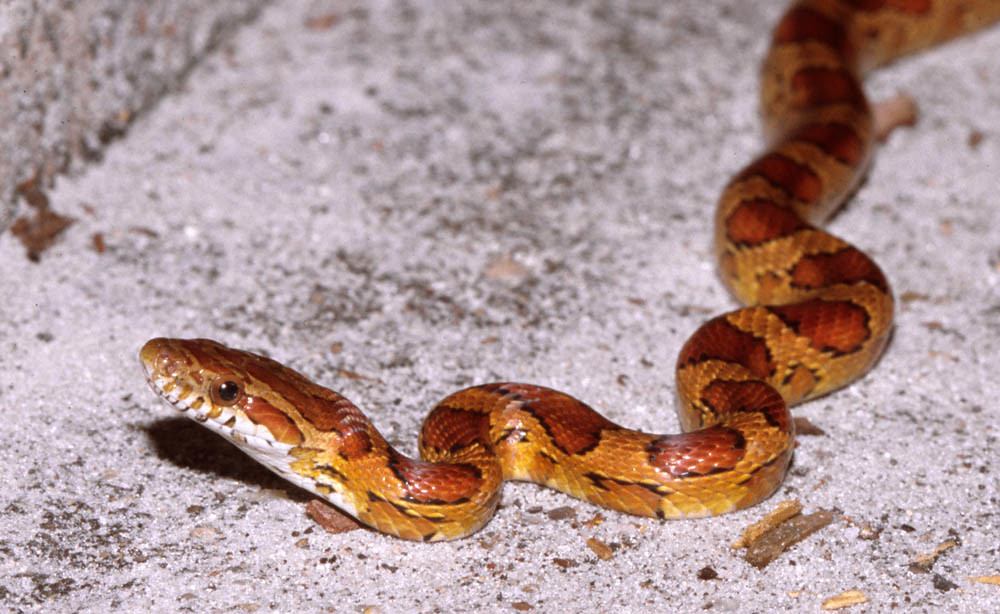
Corn snakes are widely considered the gold standard for beginner snake owners due to their docile nature and straightforward care requirements. These North American colubrids typically grow to a manageable 3-5 feet in length, making them perfect for keepers with limited space. Their vibrant orange, red, and yellow patterns, which come in numerous morphs and variations, offer visual appeal without the high maintenance of more exotic species. Corn snakes rarely bite, quickly become accustomed to handling, and demonstrate curious, active behaviors that make observation fascinating for owners of all ages. Their 15-20 year lifespan also means they can be lifelong companions with proper care.
Ball Python (Python regius)
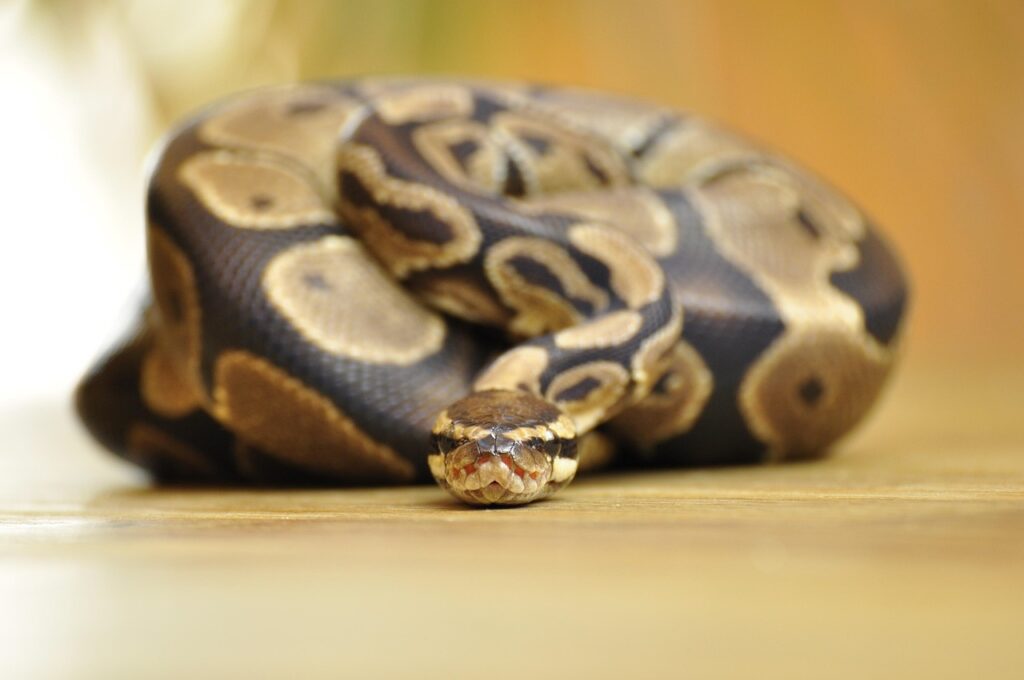
Ball pythons have earned their place as one of the most popular pet snakes worldwide, beloved for their docile temperament and endearing behaviors. These West African pythons get their name from their defensive habit of curling into a tight ball with their head protected in the center when stressed—though captive-bred specimens rarely display this behavior with regular, gentle handling.
Adult ball pythons typically reach 3-5 feet, with females growing larger than males, making them substantial but still manageable for most keepers. Their incredible variety of morphs—from basic wild-types to albinos, pieds, and complex pattern variations—has created an entire hobby culture of ball python enthusiasts. With proper care, these snakes can live 20-30 years, making them a significant but rewarding commitment for dedicated owners.
Kingsnakes (Lampropeltis species)
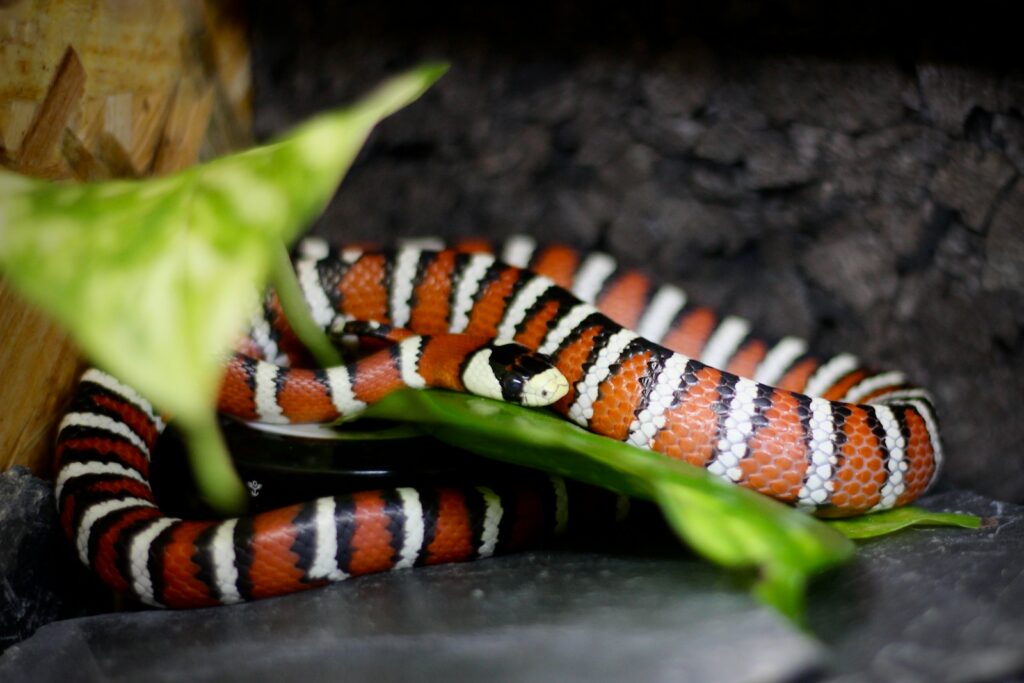
Kingsnakes represent a diverse group of North American serpents that make exceptional pets for both beginners and experienced keepers. These constrictors are famous for their ability to eat other snakes in the wild (including venomous species, to which they have some immunity), but captive specimens thrive on a simple diet of rodents. The California Kingsnake, Mexican Black Kingsnake, and Florida Kingsnake are particularly popular variations, each offering distinctive patterns and coloration ranging from dramatic black and white banding to rich, glossy solid black. Most kingsnakes remain under 5 feet in length and possess a curious, active temperament that makes them engaging to observe. Their hardy nature, resistance to common reptile health issues, and willingness to eat frozen-thawed prey make them particularly low-maintenance compared to some other snake species.
Milk Snake (Lampropeltis triangulum)
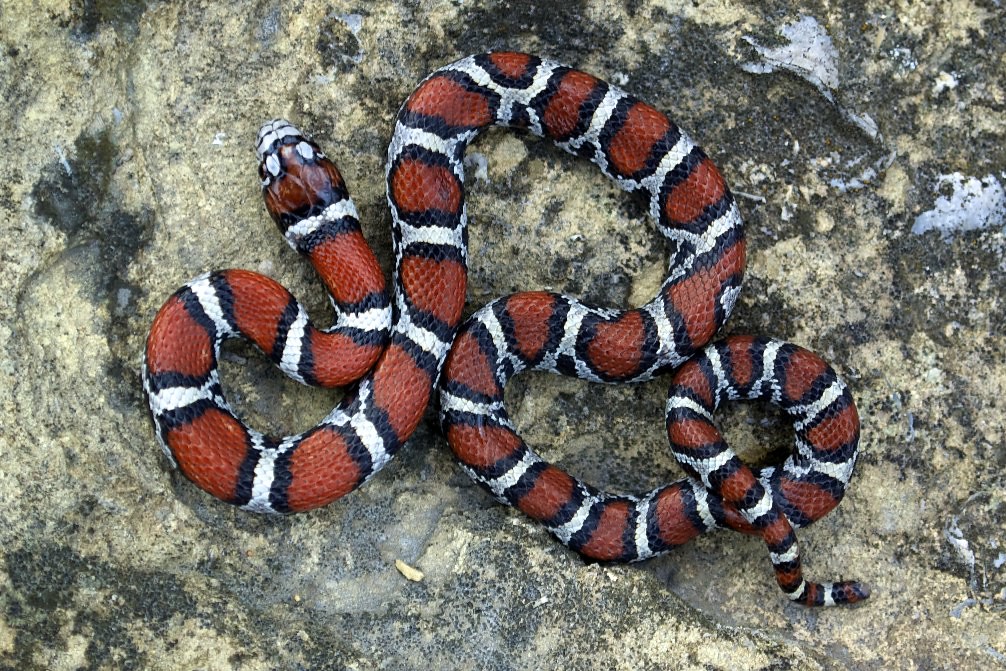
Milk snakes are closely related to kingsnakes and share many of their positive attributes as pets, while offering some of the most striking coloration in the snake world. These non-venomous colubrids are famous for their vibrant tricolor patterns of red, black, and yellow or white bands, which evolved as mimicry of the venomous coral snake—a classic example of Batesian mimicry in nature. Despite their warning coloration, milk snakes are typically gentle-natured and rarely defensive once acclimated to handling. Most subspecies remain at a manageable size between 2-4 feet, with the Honduran milk snake being particularly popular among enthusiasts. Their relatively simple care requirements, willingness to accept frozen-thawed rodents, and active, inquisitive nature make them excellent display animals that can also be handled regularly.
Rosy Boa (Lichanura trivirgata)
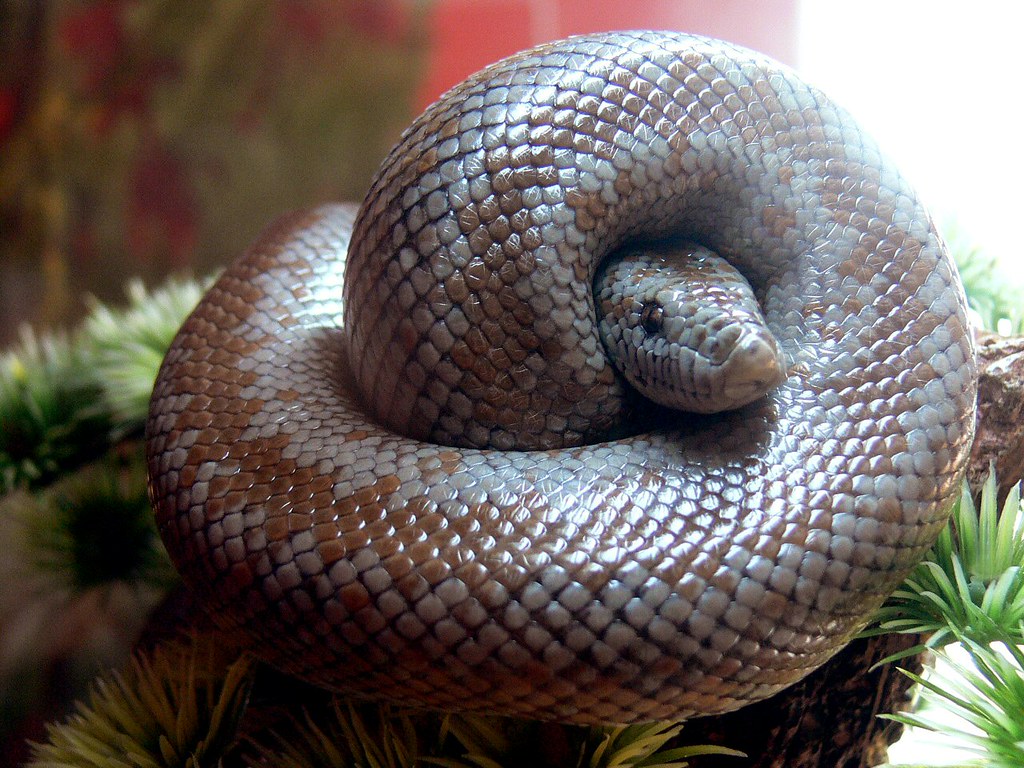
Rosy boas are among the most docile snakes available in the pet trade, making them ideal for keepers who want a snake with an exceptionally calm temperament. Native to the southwestern United States and northwestern Mexico, these small boas typically reach only 2-3 feet in length, making them appropriate for keepers with space limitations. Their stocky build, smooth scales, and gentle coloration of cream, brown, and rusty stripes create an understated but attractive appearance.
Rosy boas are known for their extremely slow movement patterns and reluctance to bite—even when startled, they’re more likely to release a musky odor than attempt to strike. Their long lifespan of 20+ years and straightforward care requirements, including low humidity needs that match most household environments, make them particularly suitable for first-time snake owners.
Children’s Python (Antaresia childreni)
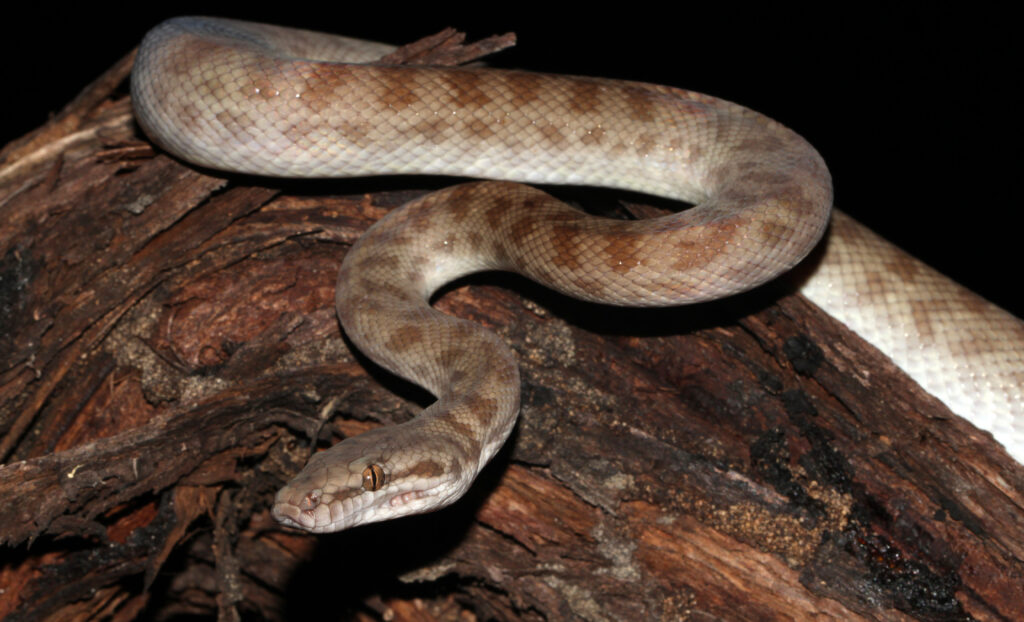
Despite their name (which honors John George Children, a 19th-century curator at the British Museum, rather than referring to human offspring), Children’s pythons make excellent pets for reptile enthusiasts of all experience levels. These Australian pythons remain small, typically reaching only 2-3 feet in length, making them one of the most manageable python species available in the pet trade. Their slender build, attractive tan to reddish-brown coloration with subtle patterning, and curious disposition make them engaging companions that don’t require extensive space.
Children’s pythons are known for their calm temperament, rarely becoming defensive or striking once they’ve acclimated to handling. Their ability to thrive in a relatively small enclosure, tolerance for a range of humidity levels, and straightforward feeding response contribute to their reputation as excellent, low-maintenance pet snakes.
Kenyan Sand Boa (Gongylophis colubrinus)
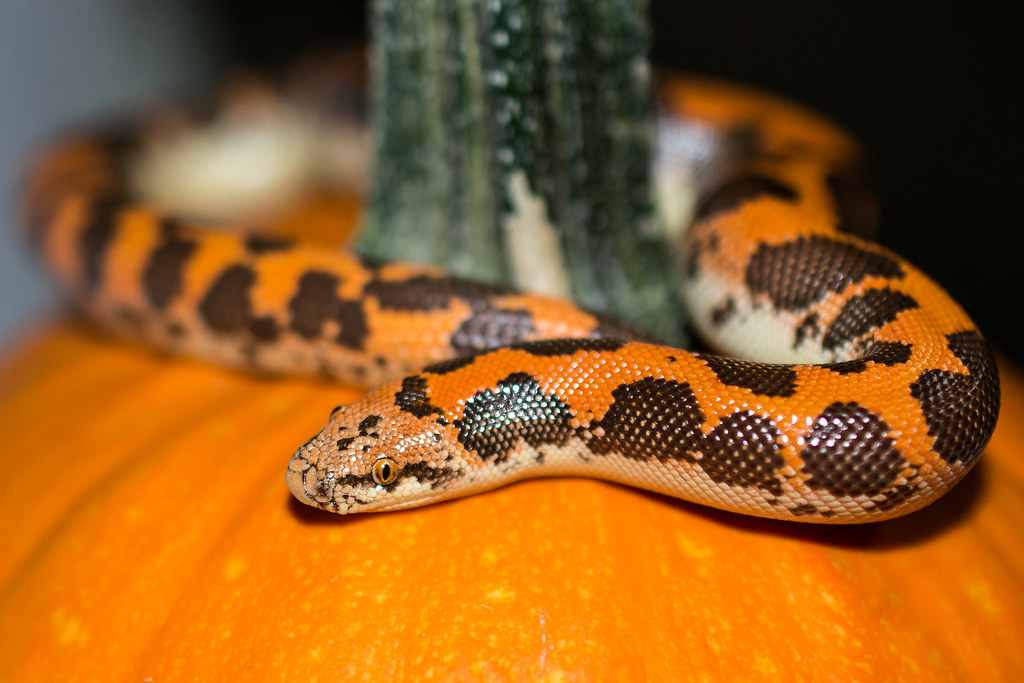
Kenyan sand boas are often described as the “pocket pythons” of the snake world, offering the stocky, muscular build of larger constrictors in a compact, manageable package. Males typically reach only 15-20 inches, while females grow slightly larger at 2-3 feet, making them one of the smallest boa species available to pet keepers. These predominantly subterranean snakes have a unique appearance with small eyes, rounded snouts perfect for burrowing, and attractive orange or tan coloration with brown spots. Their docile nature and slow, deliberate movements make them excellent for nervous handlers or those who prefer a less active snake.
Kenyan sand boas are known for spending much of their time burrowed in substrate, creating interesting behavioral displays when they emerge to hunt or explore, and their simple care requirements—including easy feeding and low humidity needs—make them particularly suitable for beginners.
Western Hognose Snake (Heterodon nasicus)
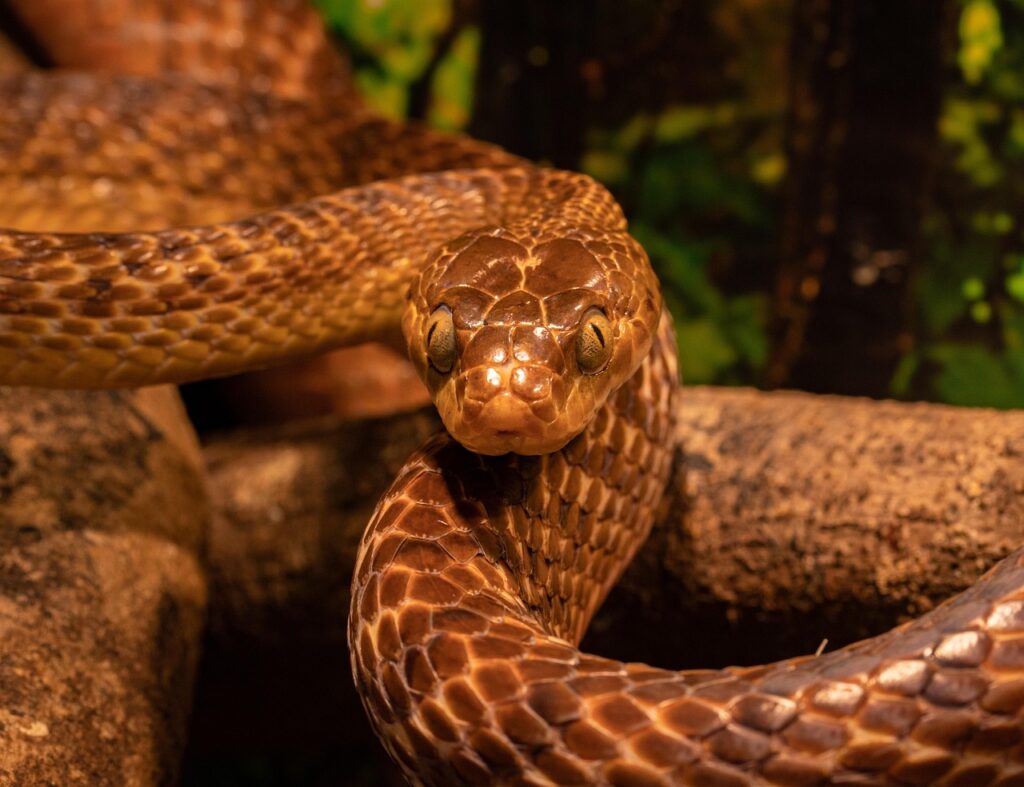
Western hognose snakes combine adorable appearances with fascinating behaviors, making them increasingly popular in the pet trade despite some unique care considerations. Their most distinctive feature is their upturned “hog-like” snout, which they use for digging in their native prairie habitats, along with their relatively short, stout bodies that typically reach only 2-3 feet in length. Hognoses are famous for their dramatic defensive displays—including flattening their necks like cobras, hissing loudly, and even playing dead when truly distressed—behaviors that are more theatrical than threatening and often diminish with regular handling.
While technically rear-fanged with mild venom used for subduing prey, their bites are generally harmless to humans, causing at most mild irritation in sensitive individuals. Their intelligence, active daytime habits, and expressive behaviors make them especially engaging pets, though prospective owners should note they sometimes require scenting techniques to accept rodent prey items.
Garter Snake (Thamnophis species)
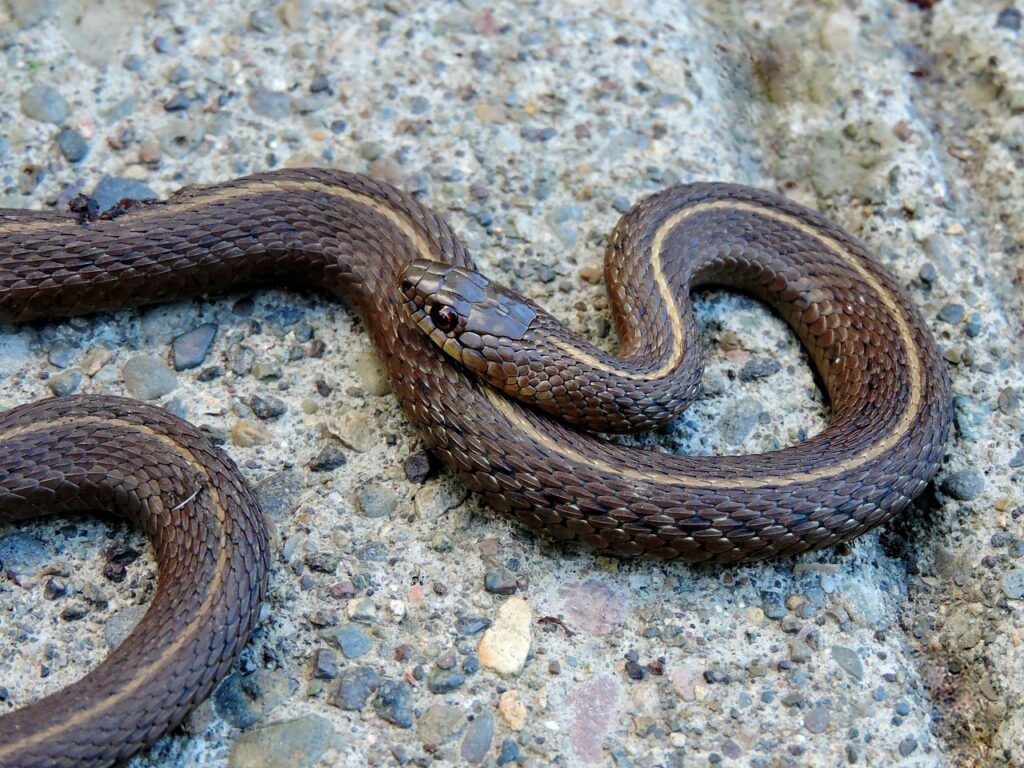
Garter snakes represent a diverse group of North American serpents that have recently gained popularity as pets due to their active nature and relatively simple care. Unlike many other pet snake species, garters are predominantly diurnal, meaning they’re active during daylight hours when owners can observe their behaviors. Most species remain small, ranging from 2-3 feet in length, with slender builds that make them less intimidating for new keepers.
Their varied diet in captivity can include fish, amphibians, and earthworms in addition to rodents, offering an alternative for owners uncomfortable with feeding mice or rats exclusively. The common garter, checkered garter, and ribbon snake varieties display attractive striped patterns ranging from black and yellow to red and turquoise, depending on the species and locality. While garters may be slightly more flighty than some other beginner species and may release a musky scent when stressed, regular handling typically results in tame, manageable pets.
Carpet Python (Morelia spilota)

Carpet pythons offer more advanced keepers a larger, more substantial pet snake that still maintains a generally amenable temperament with proper handling. These Australian pythons typically reach 6-9 feet in length, with females growing larger than males, making them impressive display animals that require more substantial enclosures than beginner species. Carpet pythons are prized for their stunning variety of patterns and colorations across different subspecies and localities—from the vibrant yellows of Jungle Carpets to the subdued elegance of Diamond Pythons with their characteristic diamond-shaped patterns.
While juvenile carpet pythons can be somewhat defensive, captive-bred specimens typically calm down significantly with regular, confident handling techniques. Their semi-arboreal nature makes them active and interesting to observe as they climb and explore their environments, utilizing both horizontal and vertical space in their enclosures.
Boa Constrictor (Boa constrictor)
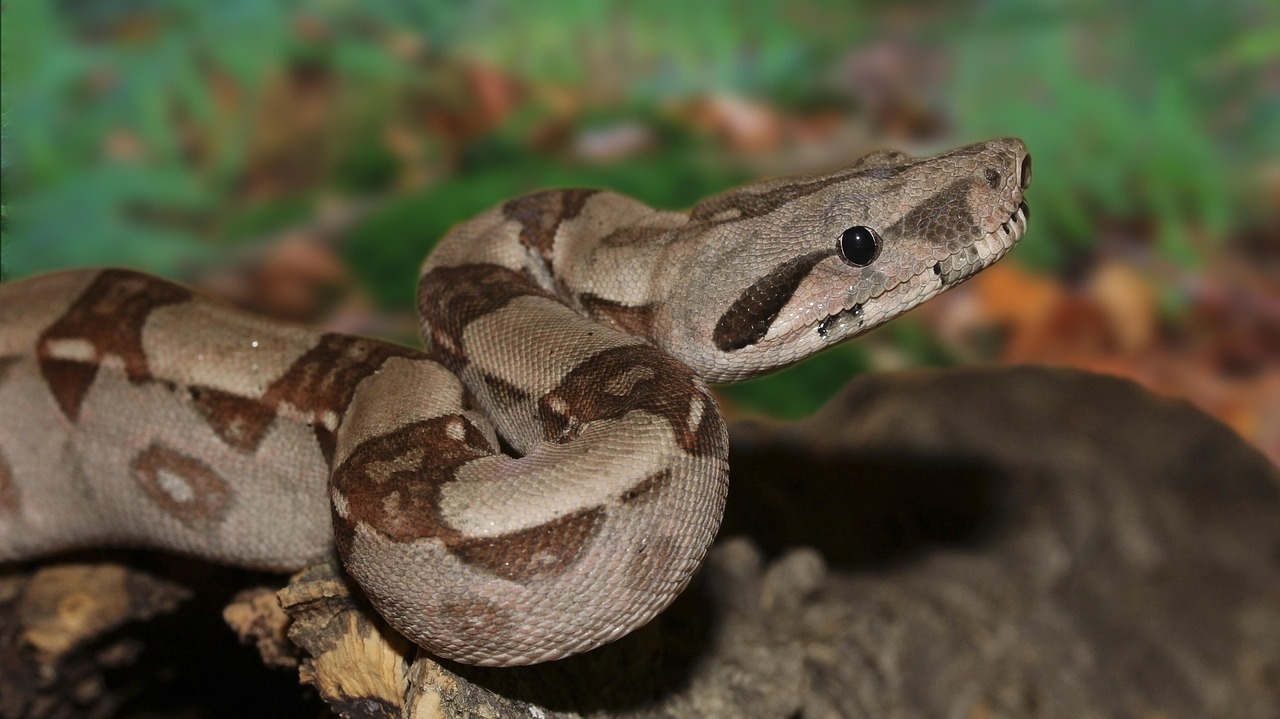
Boa constrictors represent one of the classic pet snake species, offering impressive size and muscular build while maintaining a generally docile temperament suitable for dedicated intermediate keepers. These Central and South American constrictors typically reach 6-10 feet in length, with females growing substantially larger than males, creating an imposing but manageable snake for those prepared for their spatial requirements.
Captive-bred boas are known for their calm disposition, often becoming remarkably tolerant of handling and demonstrating impressive recognition of their regular keepers. Their attractive pattern of “saddle” markings varies across different localities, with Colombian, Suriname, and Red-Tailed varieties offering distinctive appearances and slight temperament differences. While their size means they require larger enclosures and more substantial prey items than beginner species, their straightforward care requirements, strong feeding response, and 20-30 year lifespan make them rewarding long-term companions for serious reptile enthusiasts.
Brazilian Rainbow Boa (Epicrates cenchria)
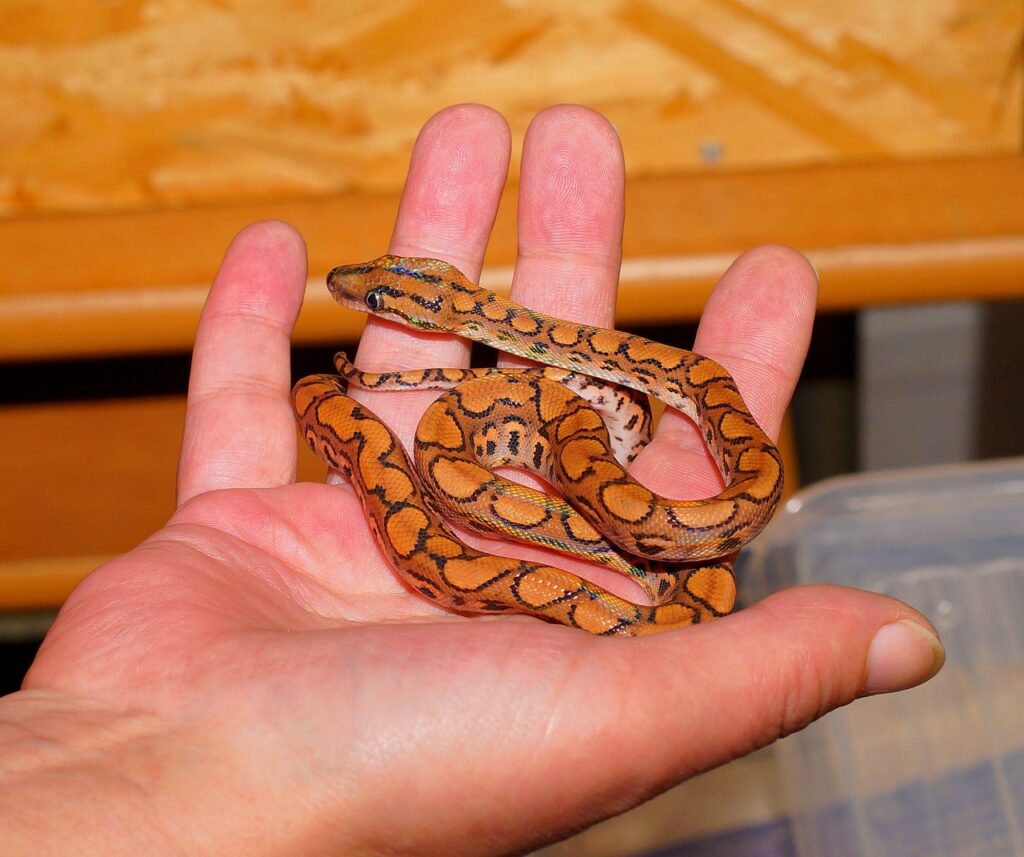
Brazilian rainbow boas offer a stunning combination of manageable size and extraordinary beauty, making them popular among intermediate snake keepers. These South American constrictors typically reach 5-7 feet in length, placing them in the medium-sized category of pet snakes. Their most remarkable feature is their iridescent scales, which refract light to create a rainbow-like shimmer across their rich, reddish-brown bodies patterned with dark circular markings—an effect that must be seen in person to be fully appreciated. While young rainbow boas can be somewhat defensive, most specimens calm down significantly with regular, gentle handling as they mature.
Their higher humidity requirements (70-80%) make them slightly more demanding than some beginner species, requiring proper enclosure setup to prevent respiratory issues, but their stunning appearance and generally docile adult temperament make them worth the extra attention to husbandry details.
African House Snake (Boaedon species)
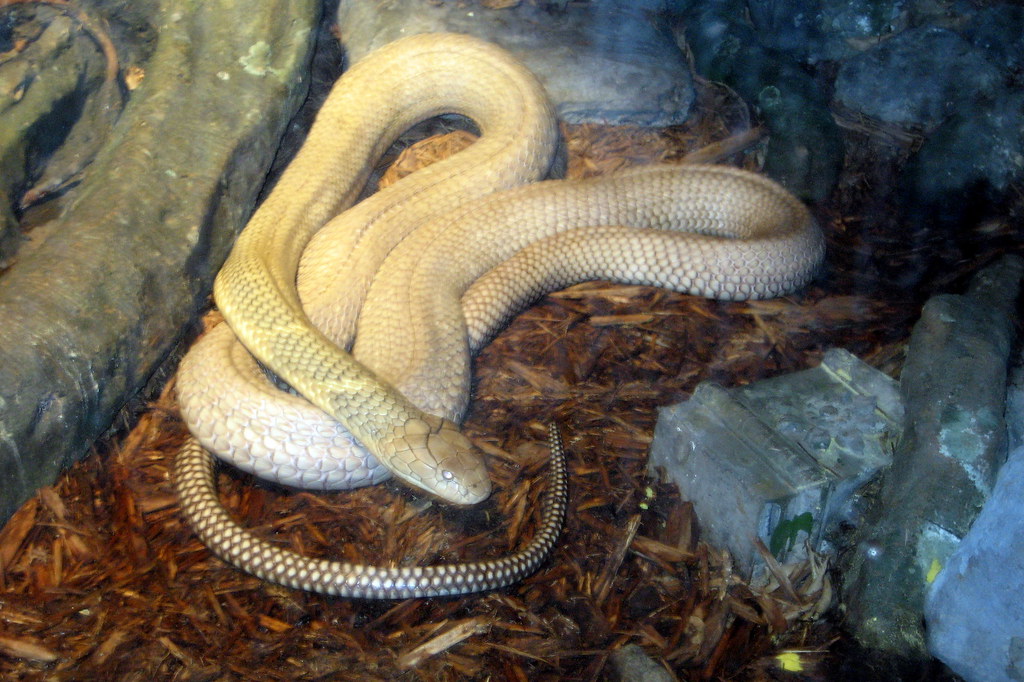
African house snakes have become increasingly popular in the pet trade as their positive attributes become more widely recognized among keepers. These glossy-scaled colubrids typically reach a manageable 3-5 feet in length, with females growing larger than males. Their sleek appearance in shades of brown, gray, or reddish tones, sometimes with subtle striping, gives them an elegant if understated beauty compared to more flashy species.
African house snakes are renowned for their docile temperaments, calm handling responses, and exceptional feeding response that makes them appropriate for beginners who want a reliable eater. Their adaptability to various temperature and humidity ranges makes their care straightforward, while their active, curious nature provides engaging behavioral displays without the defensive tendencies of some other species.
Dumeril’s Boa (Acrantophis dumerili)
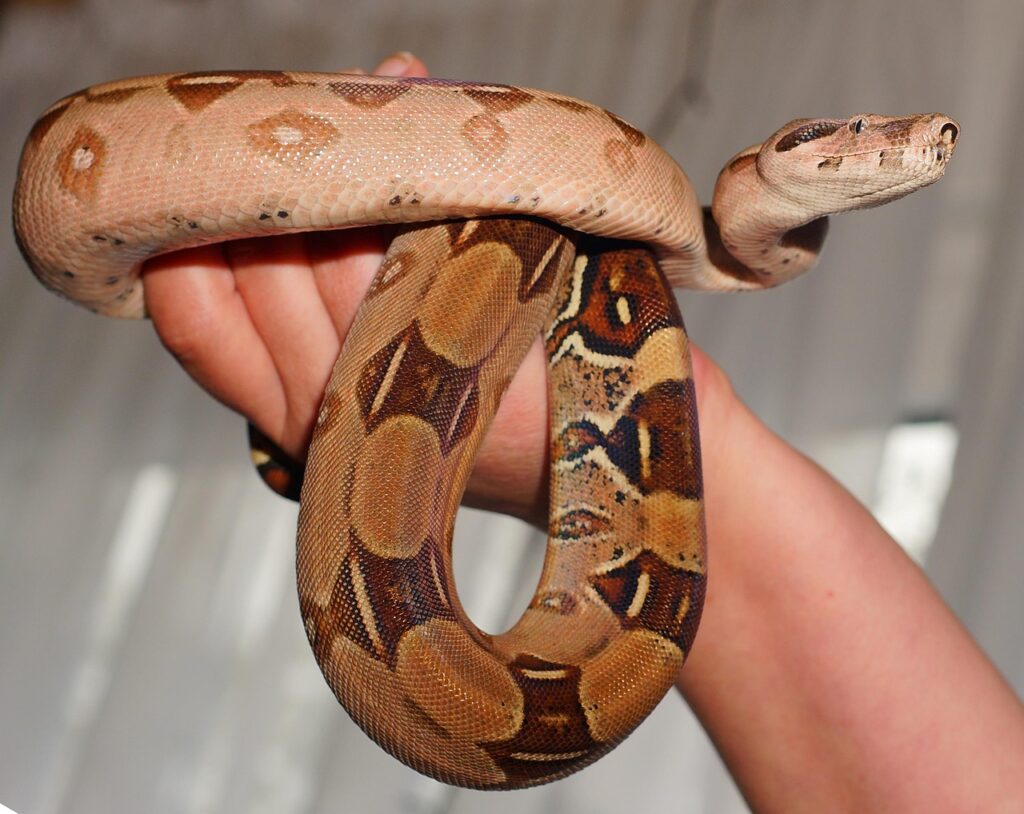
Dumeril’s boas from Madagascar offer a perfect middle ground for keepers who appreciate the substantial feel of larger constrictors but don’t have the space for giant species. These attractive boas typically reach 4-6 feet in length, with some females occasionally approaching 8 feet, giving them an impressive presence without requiring industrial-sized enclosures. Dumeril’s boas are celebrated for their exceptionally calm temperament, with many specimens rarely if ever attempting to bite, even when startled.
Their distinctive patterning of dark, saddle-like blotches on a tan or grayish background, along with their uniquely shaped, somewhat flattened heads, gives them a distinctive appearance that snake enthusiasts immediately recognize. Their relatively low humidity requirements compared to some other boa species, combined with their excellent feeding response and general hardiness, make them suitable for dedicated beginners or intermediate keepers looking for a substantial, docile companion.
Essential Care Considerations for Pet Snakes
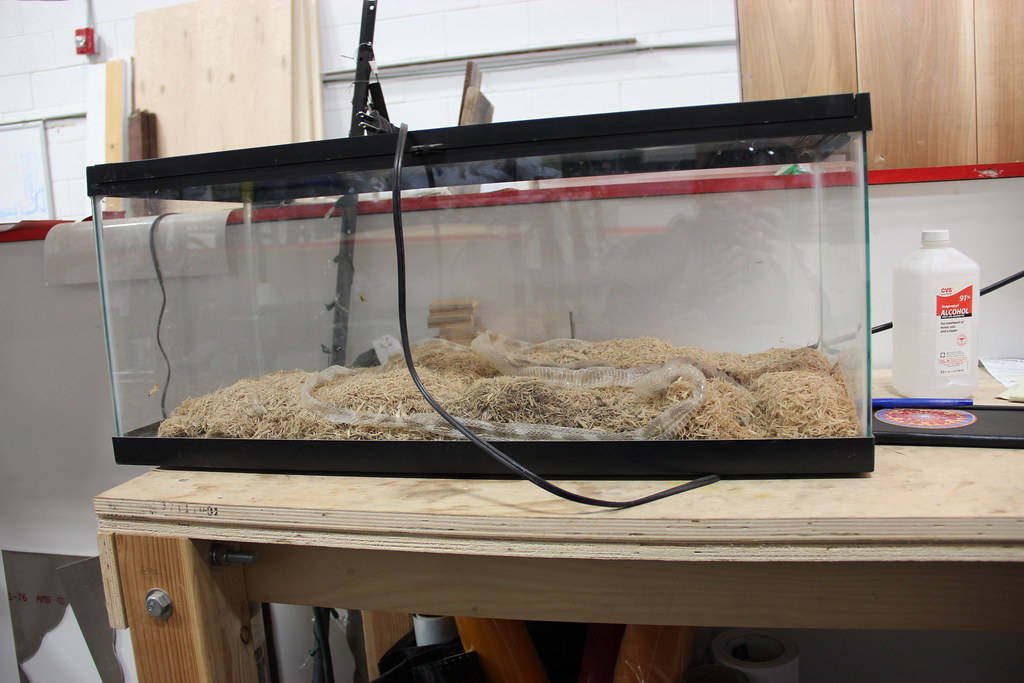
Regardless of which snake species you choose, several universal care principles apply to ensure your serpentine companion thrives in captivity. Proper enclosure size is crucial—while young snakes may start in smaller terrariums, adults need appropriate space that allows for normal movement patterns and thermoregulation behaviors. Temperature gradients are essential for all snake species, requiring a warm basking area (typically 85-90°F depending on species) and a cooler side (75-80°F) to allow the animal to regulate its body temperature.
Humidity requirements vary dramatically between species, from the arid needs of corn snakes and ball pythons to the tropical requirements of rainbow boas, making proper research into your specific species essential. Regular handling, typically 1-3 times weekly for 10-15 minutes per session, helps most pet snakes remain docile and accustomed to human interaction, while feeding schedules should be species-appropriate, typically ranging from weekly meals for growing juveniles to every 2-3 weeks for adult specimens.
The world of pet snakes offers remarkable diversity, from the beginner-friendly corn snake to the impressive yet docile Dumeril’s boa. These fascinating reptiles can provide years of companionship with relatively simple care requirements compared to many traditional pets. When acquired from reputable breeders and properly socialized through gentle, regular handling, the species highlighted in this article consistently demonstrate friendly temperaments that contradict common misconceptions about snakes. Whether you’re drawn to their beautiful patterns, curious behaviors, or the unique bond that develops between keeper and reptile, these fourteen snake species represent some of the finest ambassadors for the reptile hobby, capable of changing perceptions and creating lifelong enthusiasts with their surprising charm and gentle nature.

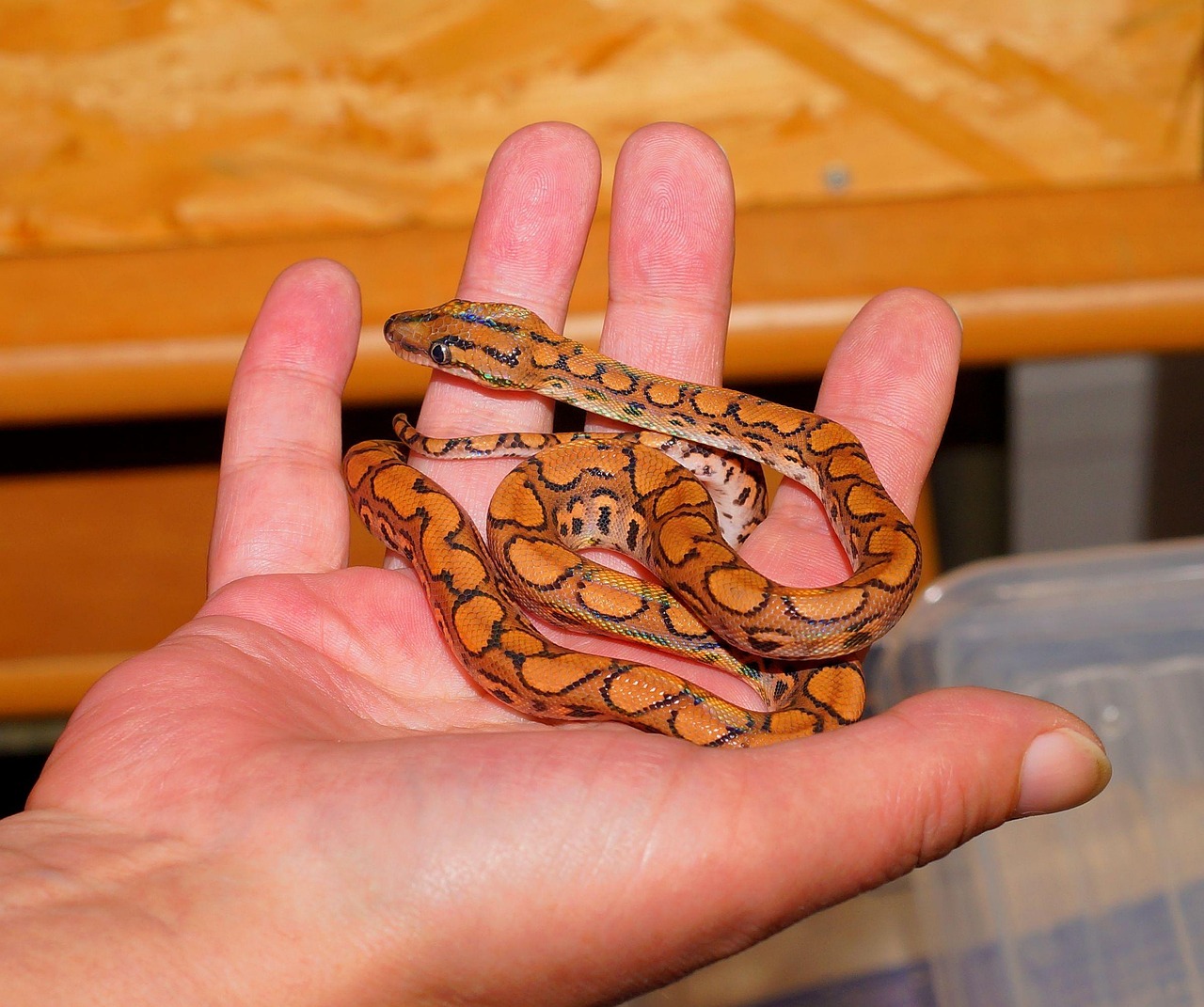
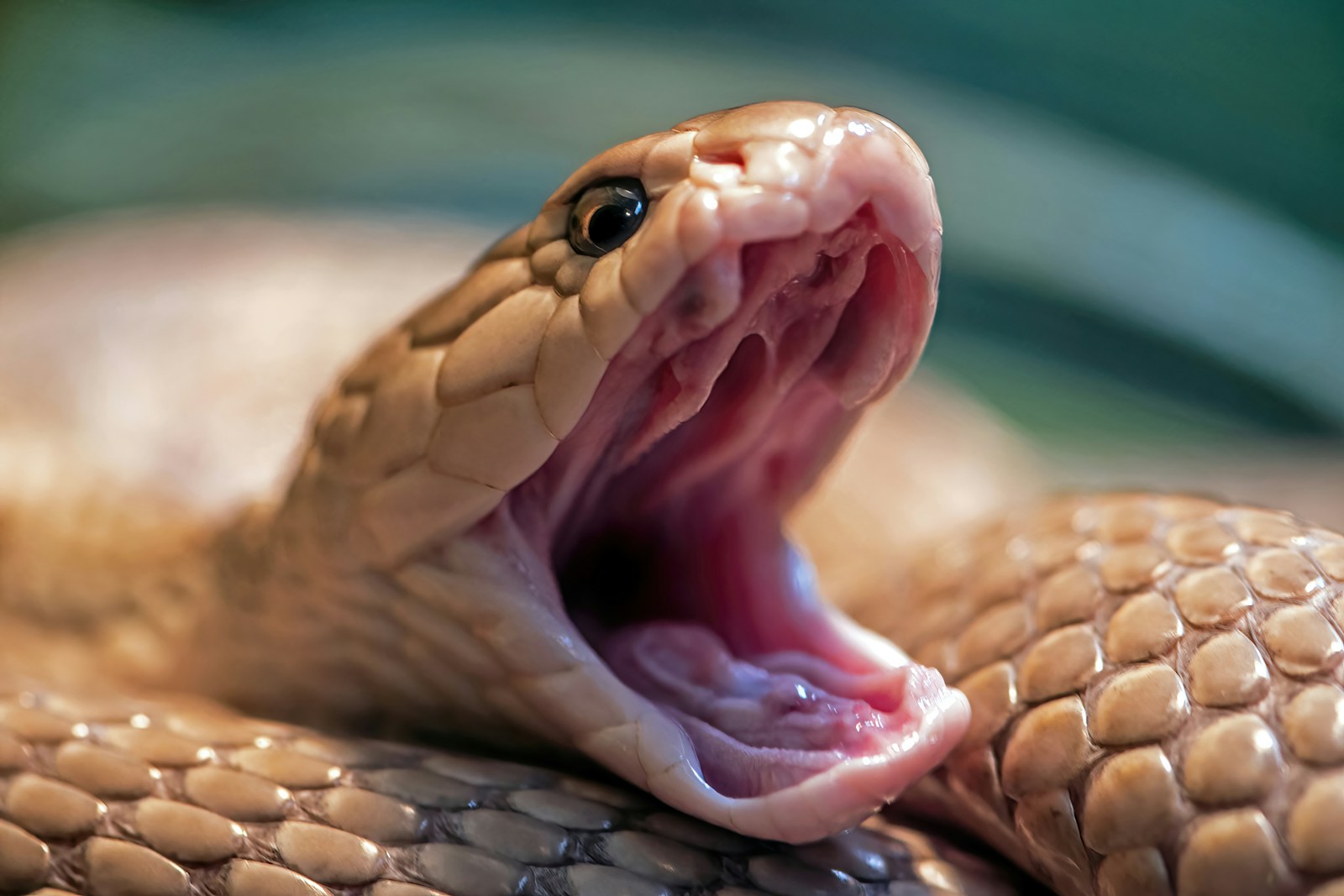

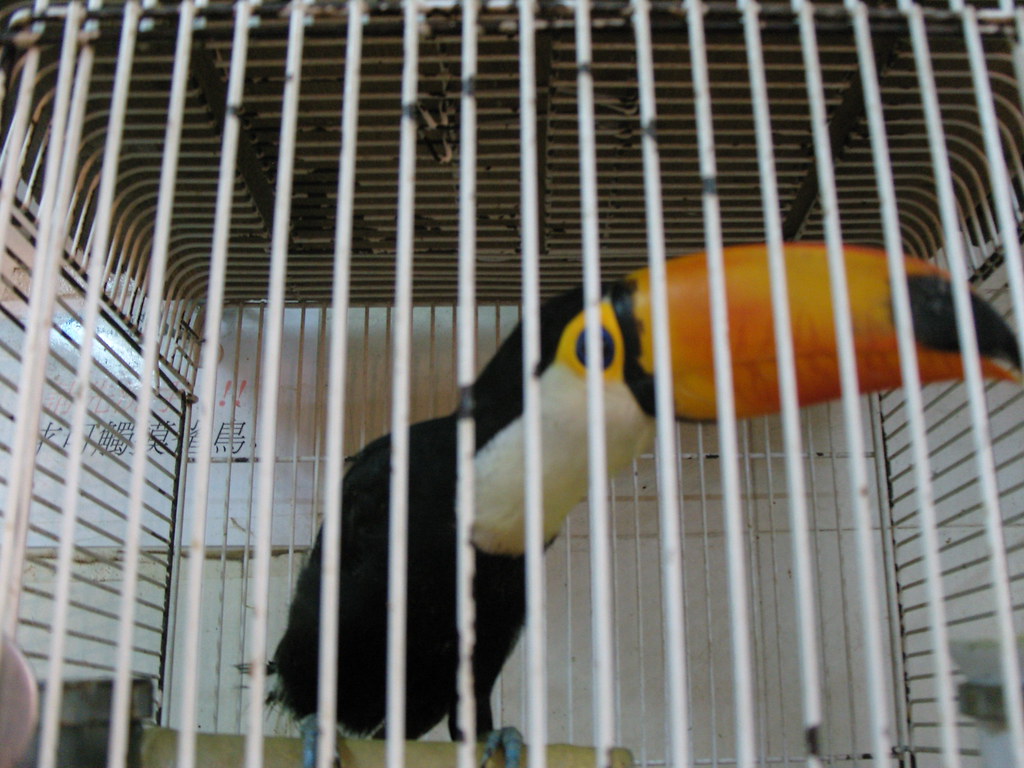
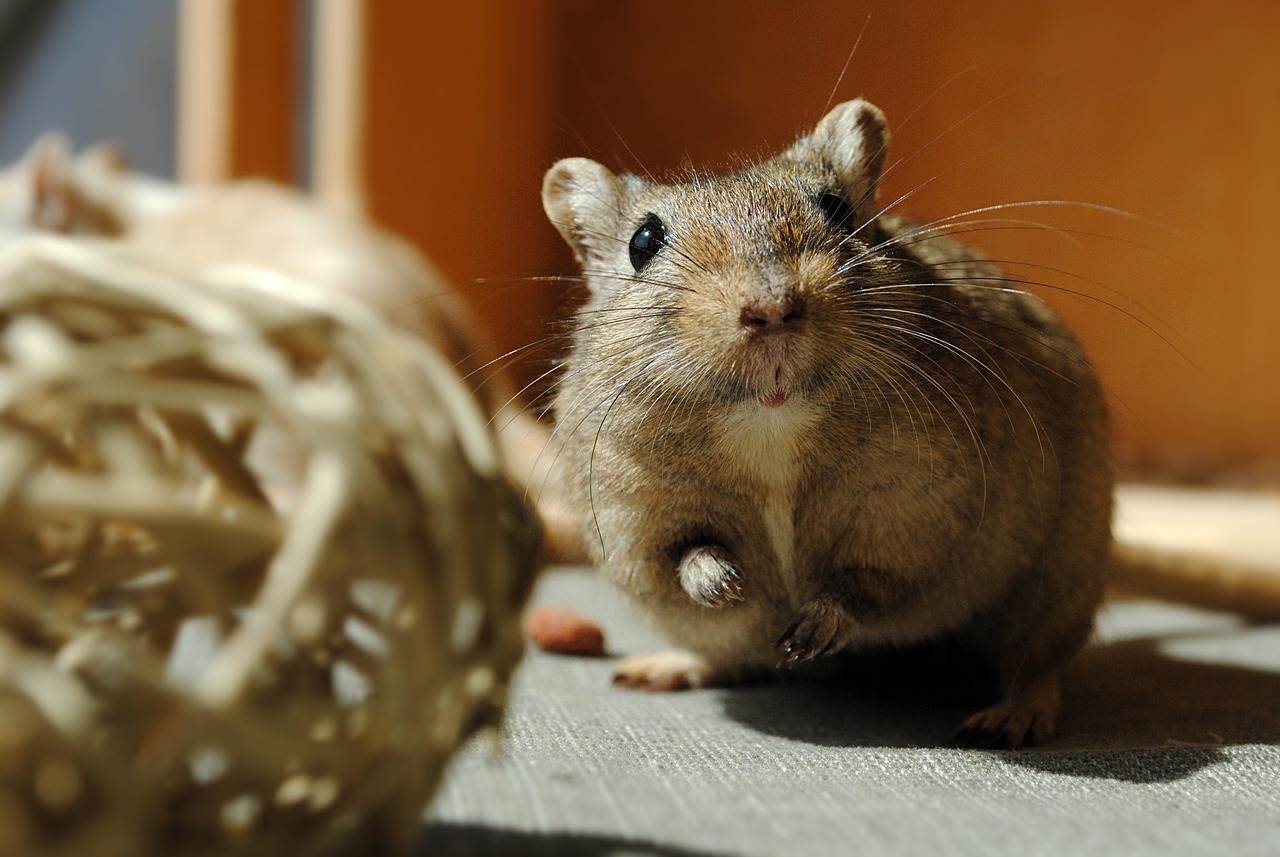
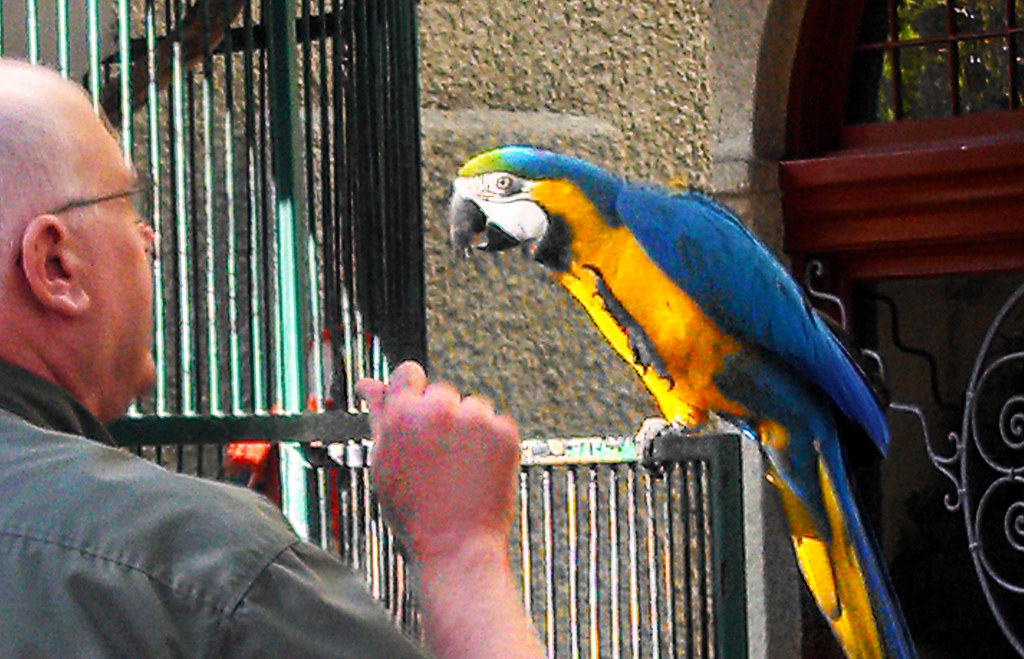
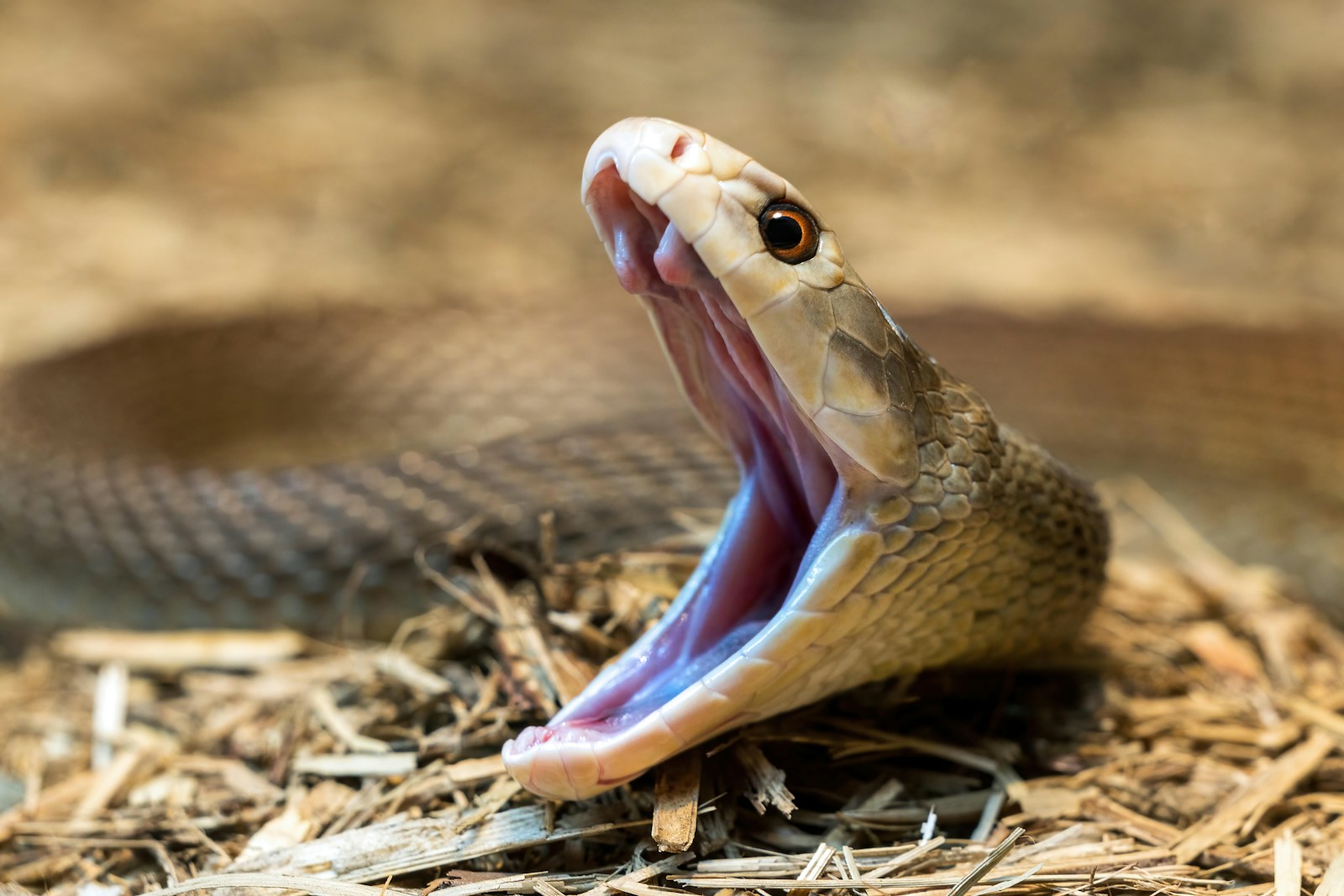
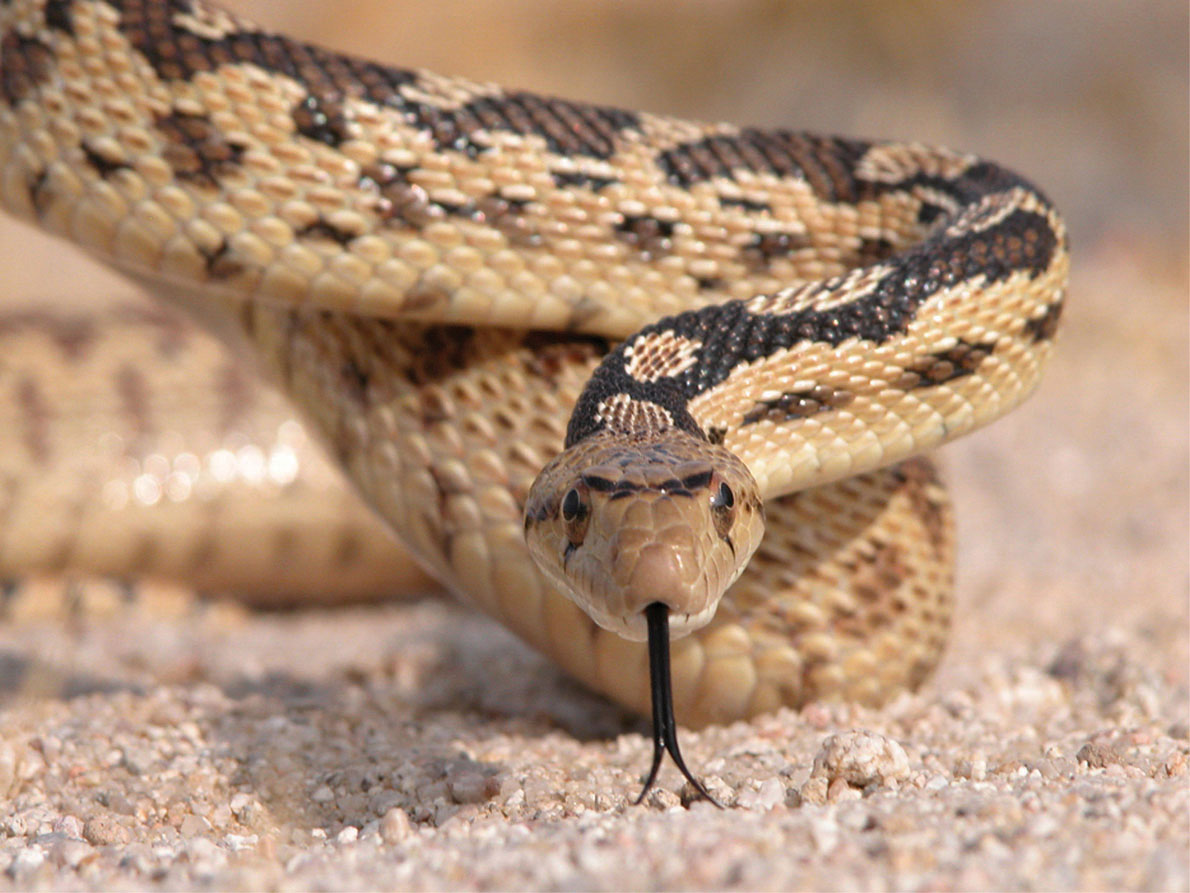
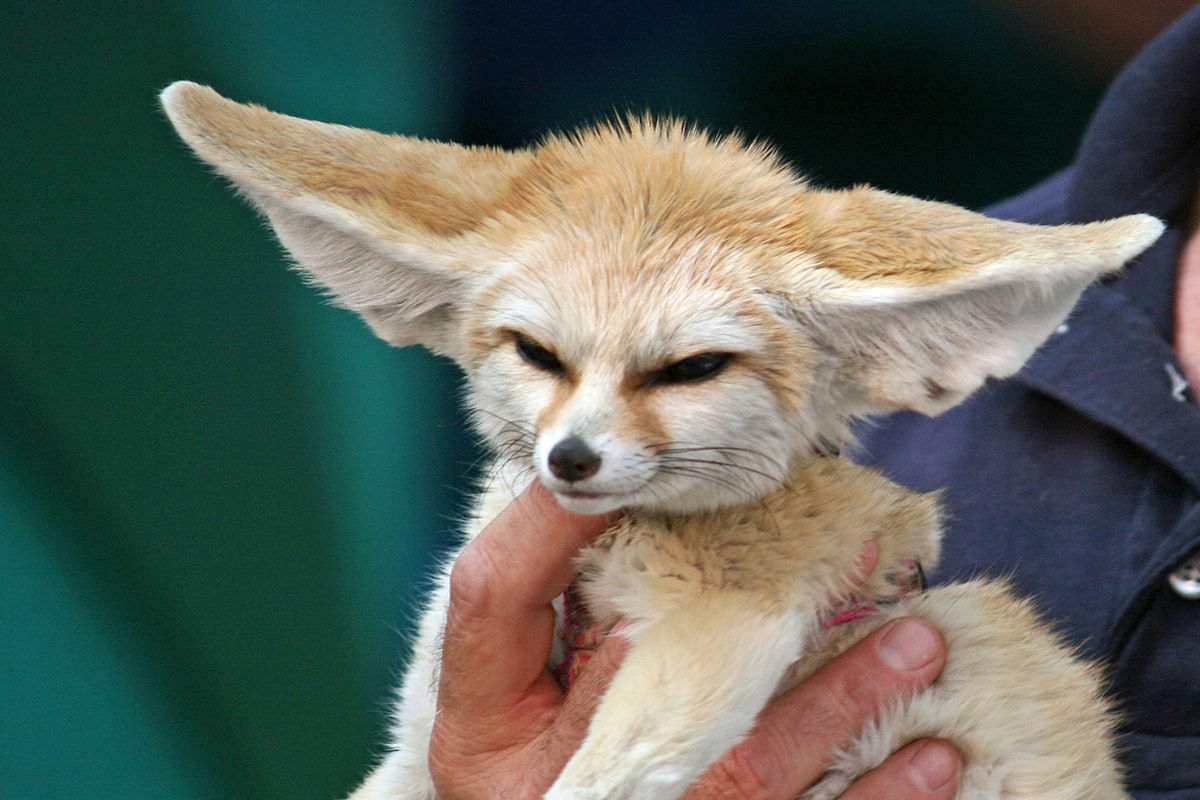
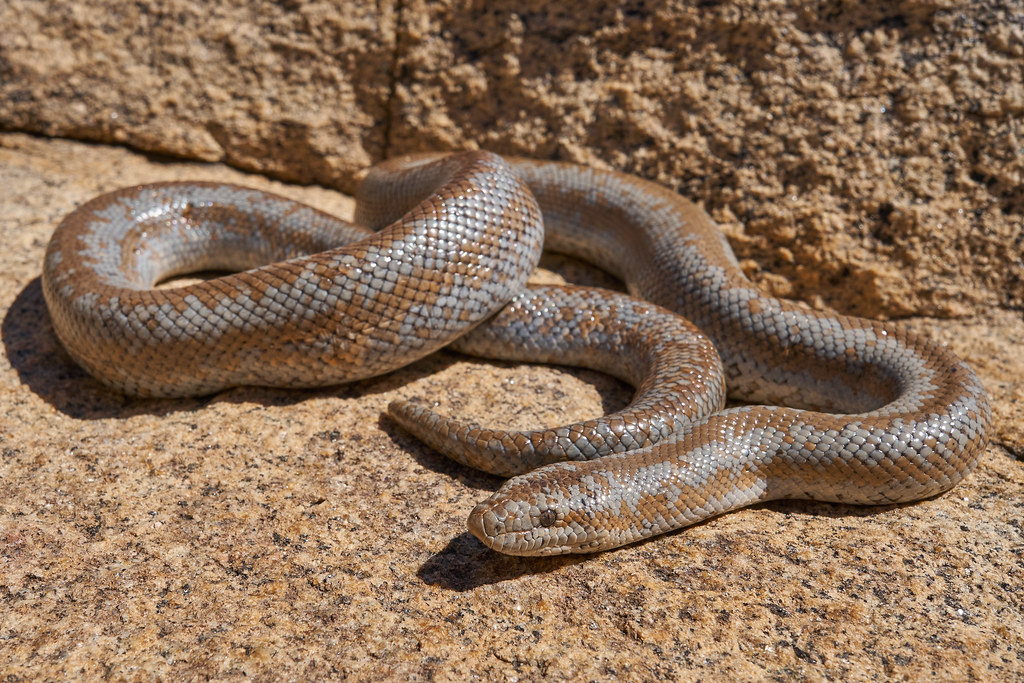
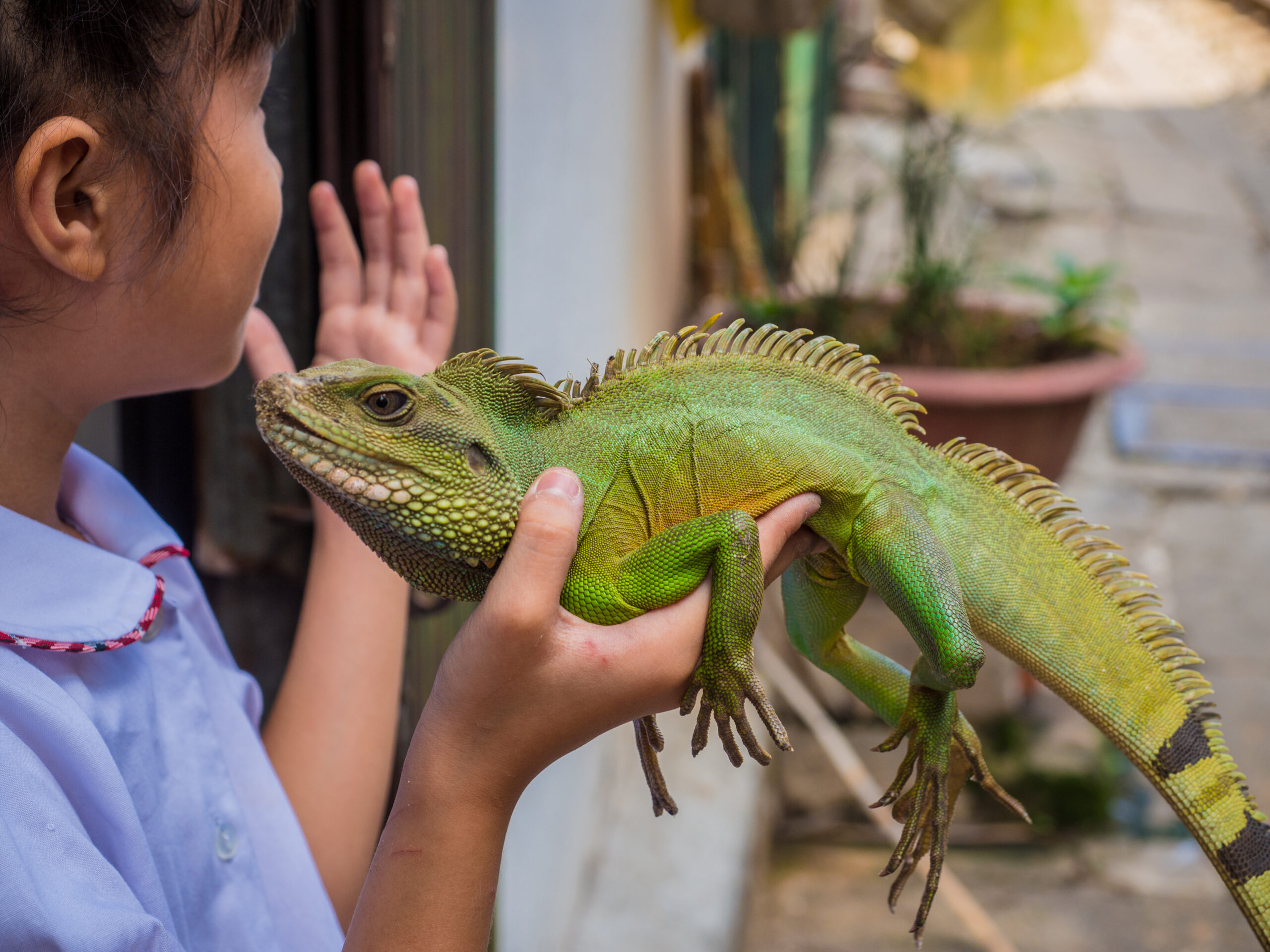




Leave a Reply